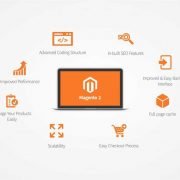Artificial intelligence (AI) has significantly impacted the printed circuit board (PCB) business and revolutionised many elements of its operations. AI technologies are revolutionising the PCB industry, enabling faster, more efficient processes and stimulating innovation. These innovations span from design and optimization to production and assembly. This blog examines how these cutting-edge technologies transform PCB prototyping and open the door to a more intelligent, streamlined, and efficient future.
The Development of PCB Prototyping
Let’s first examine the standard PCB prototyping before exploring the roles of AI and IoT. In the past, PCB design required tedious iterations, manual drafting, and lengthy manufacturing processes. However, the development of computer-aided design (CAD) software allowed designers to produce complex PCB layouts more quickly and accurately.
Even with these developments, problems continued, including complicated testing, manufacturing mistakes, and design optimisation. This is where IoT and AI technologies come into play, providing creative ways to improve overall efficiency and speed up the prototype process.
AI-Driven PCB Circuit Design
AI algorithms have completely transformed the design of PCBs, enabling shorter repetition cycles, better performance, and fewer design errors. By sorting through huge amounts of data and looking for patterns, AI can optimise PCB layouts for features like signal integrity, heat management, and manufacturability.
For example, AI systems can anticipate potential challenges with signal interference and automatically alter trace routing to reduce these concerns. Similarly, AI-powered design tools can minimise signal delays and electromagnetic interference (EMI) by optimising component location.
Internet of Things Enabled PCB manufacturing
IoT technologies have revolutionised PCB prototyping manufacturing by facilitating predictive maintenance, remote diagnostics, and real-time monitoring. Automated assembly lines and robotic soldering machines are two examples of IoT-enabled manufacturing equipment that can easily interact with central systems, offering valuable insights into performance metrics and production processes.
Businesses dealing in PCB prototyping in the UK use IoT technologies to streamline production processes, reduce downtime, and enhance quality assurance. By incorporating Internet of Things (IoT) sensors into their production equipment, manufacturers may ensure ideal conditions for PCB assembly by monitoring critical parameters like temperature, humidity, and vibration levels.
IoT-enabled manufacturing platforms can also make remote diagnostics and troubleshooting more accessible, enabling engineers to find problems early on and take proactive measures to fix them. As a result of its proactive approach, which reduces expensive downtime and boosts overall productivity, IoT has become an essential tool in current PCB prototyping facilities.
IoT in Action: The Development of the Connected Prototype
IoT technology integration in PCB prototyping creates new opportunities:
- Real-Time Data Collection and Monitoring: The prototype’s integrated sensors can gather real-time data on performance metrics such as voltage, current flow, and temperature. A monitoring system can receive this data wirelessly, enabling remote analysis and optimisation.
- Enhanced Testing Capabilities: Prototypes with Internet of Things (IoT) capabilities can communicate with other systems and devices to mimic real-world operations. This makes thorough testing and performance assessment possible outside of conventional benchtop configurations.
- Remote Collaboration & feedback: Engineers in various locations can collaborate and exchange comments on the prototype’s performance via the Internet, as the data is easily accessible. This encourages cooperative innovation and quicker design iteration cycles.
- Cost reduction: AI and IoT can help lower the cost of a prototype by optimising design layouts, minimising errors, and expediting production processes. This allows companies of all sizes to produce high-calibre electronics without going over budget.
Challenges of IoT and PCB Prototyping
Challenge 1: Integrating Wireless Technology
Integrating wireless communication capabilities into the plethora of smart objects currently available on the market is one of the problems posed by the Internet of Things (IoT) for PCB design and manufacture. When radio frequency (RF) components were incorporated into a product’s design, stricter design guidelines were applied to the printed circuit board and the entire system. Products must pass various quality control tests during manufacturing to guarantee that they don’t result in gearbox losses or interference problems.
Challenge 2: Producibility
Since designing and manufacturing items are two different things, Design for Manufacturability (DFM) presents another challenge. Several variables need to be considered while manufacturing, including total costs, raw materials, their shape, dimensional tolerances, and secondary processing, as in an SMT (Surface Mount Technology) process. Design teams frequently view DFM as a “manufacturing problem.” Still, it may be an overlooked issue in some instances because it can be challenging to visualise dimensional space constraints when a component is bendable and has unusual angles. In order to find and address manufacturing problems, most manufacturers will do a DFM analysis before starting production.
Challenge 3: Supply Chain and BOM Management
IoT projects often fail to reach the market due to various practical issues, including supply chain management, BOM management, software tools, and design and manufacturing challenges.
While supply chain management is never straightforward, uncertainty and disruption are prevalent in the industry supply chain as a whole due to COVID-19 and the electronics sector’s explosive demand. In addition to establishing and optimising the supply chain structure, which includes forecasting, demand planning and fulfilment, supplier scheduling, implementation, and strategic sourcing, businesses also need to develop practical supply chain strategies and methods for acquiring the most recent data regarding component specifications and CAD libraries.
Challenge 4: Complexity of Data Handling
During the PCB prototype, massive amounts of data are produced, including metrics for quality control, manufacturing specifications, and design specifications. Managing and analysing this data in real-time can be difficult, particularly when IoT sensors are integrated into manufacturing equipment. Businesses require strong data management systems and analytics tools to get valuable insights from the data produced by AI and IoT technologies.
In conclusion, a fundamental change can be seen in PCB prototyping by incorporating AI and IoT. Adopting these technologies will put businesses in PCB prototyping in the UK at the forefront of innovation, providing their clients with faster, more effective, and more affordable solutions. They push the industry towards intelligent, automated solutions and enable quicker PCB prototyping services. However, as AI develops further, this industry will have to deal with issues like data security, privacy, and human-machine cooperation.












